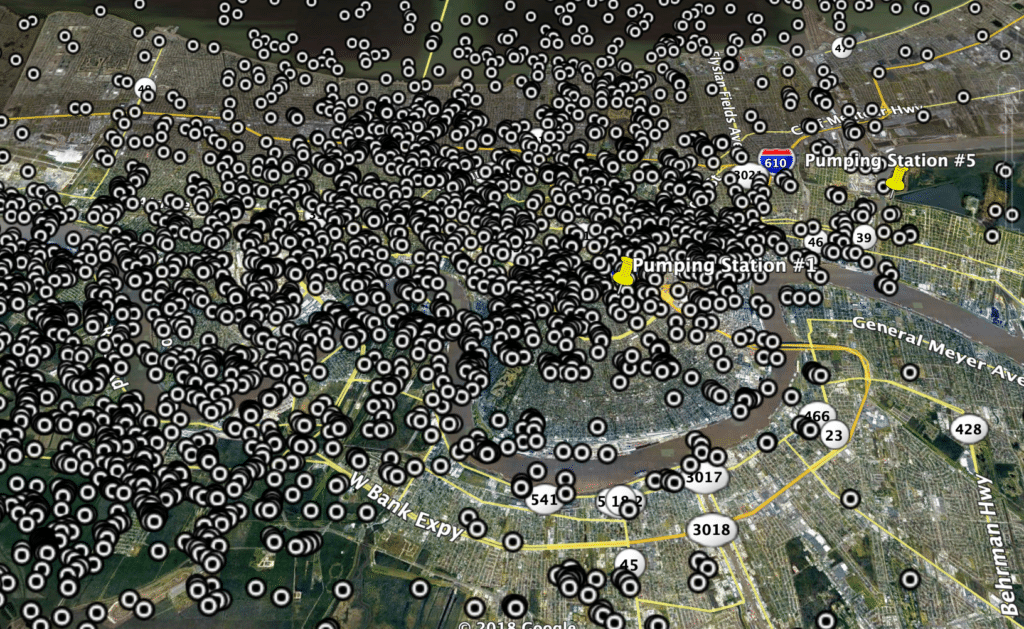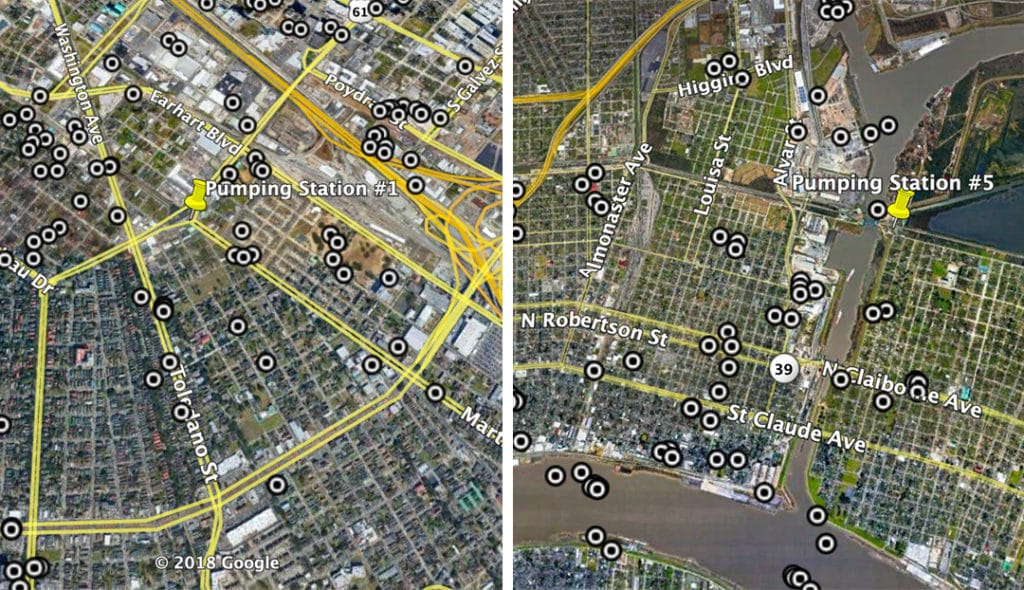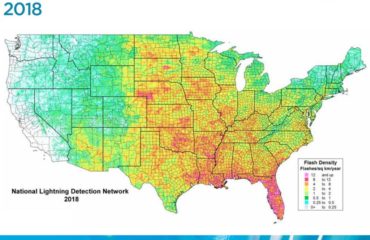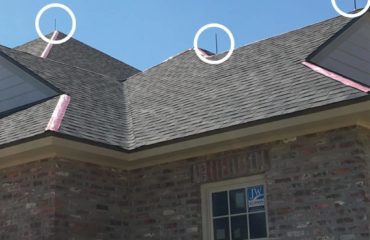In the early morning hours of July 10th, 2019, New Orleans residents awoke to heavy rain and flooding streets. Traffic backed up, cars were stuck in rising waters, and some homes and businesses in the area experienced water damage from flooding. Luckily, the city escaped without significant impact from this storm and the Tropical Storm that loomed in the Gulf of Mexico. A week after the flooding, the New Orleans Sewerage & Water Board announced that several pumps across the city were knocked out of service due to lightning strikes. Could lightning pose a serious threat to the city’s pumping stations and cause major flooding in the future? Yes, and here is how!
The Storm

Just after midnight on July 10th, the Greater New Orleans area experienced significant rain and lightning activity. In a 12-hour period the city saw 5,515 total lightning strikes, which blanketed the city. The Sewerage & Water Board announced that both Pumping Stations #1 and #5 experienced problems. A closer look at those areas presented two separate scenarios:

- Our research shows that pumping Station #1 sat directly in the middle of dense lightning activity. It was surrounded on all sides by strikes, any of which could have caused damage.
- Pumping Station #5 is located more on the outskirts of where we saw the most lightning activity. Although there weren’t as many strikes in this area, there was a single strike very close to the actual structure.
How Does Lightning Affect Electrical Components?
So, what actually caused the damage to the pumps? The most likely scenario in this case was an indirect lightning strike. Often in cases like this, an indirect strike can reach a facility, like a pumping station, by coupling to utility services and entering through ground current. The rise in voltage can ultimately damage electronics and knock equipment offline.
How Can This Damage Be Avoided?
In addition to physical lightning protection installed on the structure, emergency facilities, businesses, and homes can protect against indirect strikes and electrical damage using surge protection devices. Surge devices absorb and redirect the electrical energy that comes in from nearby strikes. This strategy can insure that electrical equipment continues running smoothly, even in an intense lightning storm like the one New Orleans recently experienced.






